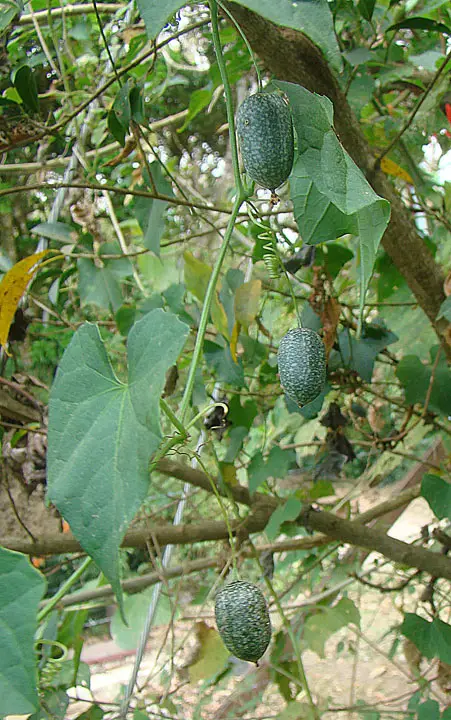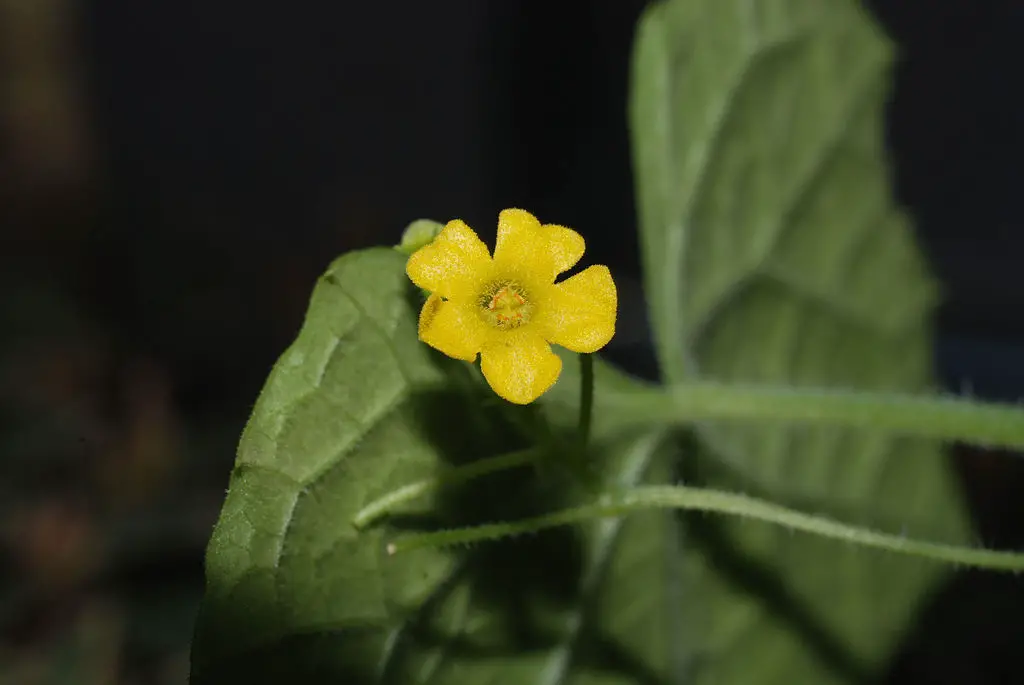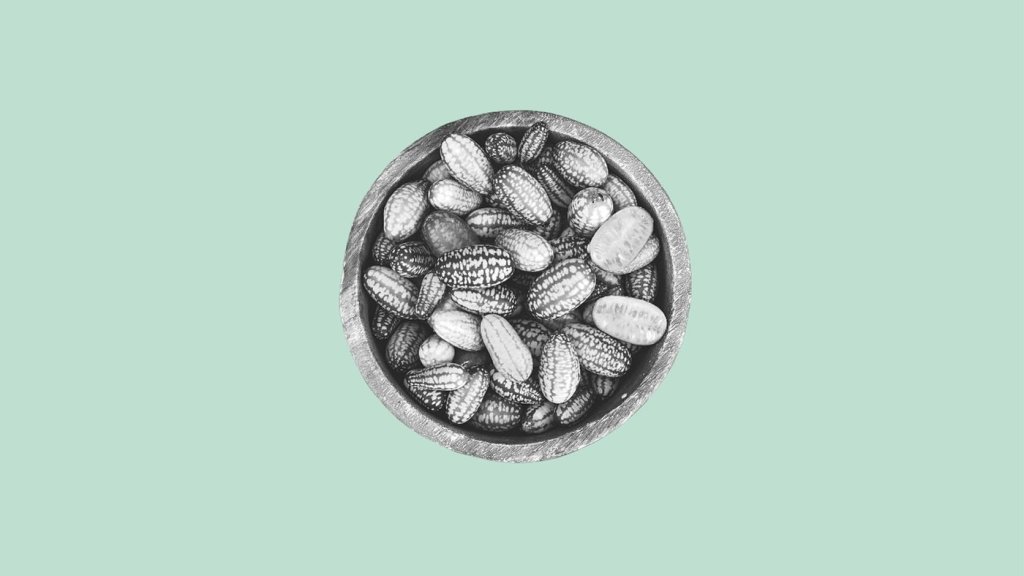Although rarely cultivated, mouse melon or cucamelon is moving up the list of most popular edible plants in heirloom gardens. This mini hybrid cucumber/watermelon is often grown for its tiny and tasty fruit.
This tiny but tasty fruit looks like a mini watermelon, hence the name mouse melon. As a firm fave among foragers, this miniature watermelon or Melothria scabra is a must for your plant database.
Check out the article below to find out everything you need to know on growing and using mouse melon.
Melothria Scabra: Plant Profile
This farmers market favorite is known by its scientific name Melothria scabra. But, its more common names of mouse melon, cucamelon, and Mexican sour gherkin suit it so much better.
What Are You Foraging For Right Now?
We're thrilled to hear your ideas. What would you like to submit today? Feel free to share your thoughts and experiences with us.
Spanish speakers and the indigenous people of pre-Columbian times also referred to these tiny watermelons by other names.
For example, the mouse melon is also called:
- Sandiita, meaning little watermelon
- Sandia de ratón
- Mexican sour cucumber
Although rarely cultivated, this cucumber family member (Cucurbitaceae) is moving up the list of most popular edible plants in heirloom gardens. This mini hybrid cucumber/watermelon is often grown for its tiny and tasty fruit.
The cucamelon is a great herbaceous climber, with a swift growth and a harvest that lasts throughout the summer foraging season. The vines regularly reach heights of ten feet and can get a bit wild.
But, it’s possible to train these edible wild fruits to grow on compact twine trellises.
Are Mouse Melons the same as Cucamelons?
What’s in a name? Not much, it seems.
Yes, although the Melothria scabra comes under many names, cucamelons and mouse melons are the same variety of wild, edible fruit.

How To Identify the Cucamelon
Who can mistake these tiny watermelons with their stripes and mini cucumber resemblance?
The Melothria scabra is easily identified through its impressive vine, which yields a surprising amount of tiny fruit. These fruits look like a mixture of tiny watermelons and are even slightly similar to regular cucumbers.
They have palmate leaves and curling tendrils that grow on long vines but are much smaller than regular cucumbers.
Cut them open, and you might be surprised to find an absence of red flesh in these tiny watermelons. Instead, the inside looks just like a regular cucumber.
You only need to look at this mini veggie to know that it’s an unusual member of the cucurbits family. For example, female flowers appear before male flowers.
You’ll also find dainty yellow flowers in the leaf axils.

Where do Mouse Melons Come From?
Sporting the name the Mexican sour gherkin, it’s no surprise this mini watermelon hails from Mexico and Central America.
Its fast-growing nature means this tender tropical perennial is easily grown and often found as an annual in temperate climates.
As a native plant in these areas of the US, this curious fruit is mainly found in:
- Heirloom gardens
- Backyard gardens
- Farmers’ markets
The cucamelon plant is not commonly seen in mainstream supermarkets or commercial agriculture.
What do Mouse Melons taste like?
Mouse melons are more than just a curious farmers’ market find. The mini watermelon is an addictively delicious fruit.
Its flavor is reminiscent of fresh, regular cucumber with a pinch of lime.
Although called the Mexican sour cucumber, these mini cucumbers don’t have any sourness.
Cucamelons are super refreshing, with the mild citrus taste making them a perfect summertime snack.
How do you Eat Mouse Melons?
The mouse melon is the perfect, low-prep wild fruit. No need to cook; wash and use whole in salads or other cold recipes.
But what better way to enjoy this wild fruit than popping them straight in your mouth on a walk around the garden.
Any other uses?
Pretty, fragile foliage means the mouse melon is also perfect as an edible ornamental, used in containers or other plantings.
Humans are not only fans of these tiny edible fruits; the bees and other pollinators are attracted to this nectar source for its sweetness and nutrition.
How to Grow Mouse Melons at Home
Cucamelons are nothing new, so why not learn from the mistakes of others and learn to grow these tiny cucumbers yourself easily.
Don’t be dismayed when planting your mouse melon plant for the first time. It starts as a delicate, slow-growing seedling. Your garden will soon sport vast, sprawling vines with a bit of patience and care.
Here are a few tips to follow to make sure your cucamelon thrives.
- Plant your cucamelon seeds about four weeks before the last frost.
- Use container gardening as protection, such as pots, from late February to April.
- When planting in compost, push the seeds on the blunted end, pointing downwards until their entirely out of sight. Plant about 1/4 to 1/2 inches deep.
- Water thoroughly.
- Depending on the temperature, germination should take about 7 to 14 days.
- Ideally, the optimum condition is germination in warm soil, somewhere between 70 and 75 degrees F.
- Try a seedling heat mat if your seed starting area appears cool and drafty.
- If planting outdoors, plant in late March in a heated greenhouse or in late May using an unheated greenhouse. Push this date even later when growing outside.
- Consider spacing; plant one seed per large pot or two per grow bag or straw bale.
- Only plant mouse melon outdoors if soil temperatures are above 70 degrees.
- Direct sow is only possible in places where this tiny fruit can be grown as perennials. USDA zones 7 to 10 are best for this.
Plant Care Tips
- When seed leaves are developed, reduce the temperature to around 65-70F (18-21C).
- Melothria scabra freshly sown seeds need protecting from mice. Mice seem to have some unusual sixth sense regarding these seeds.
- Keeping the soil/compost moist is vital, but only water around the plant, not the foliage.
- Only harvest as needed.
- Cucamelon seeds thrive in hot soil and full sun, taking on a life of their own in the summer heat.
- To support these thriving plants, use canes or a vertical trellis and let them ramble and scramble.
Getting into the great, wet outdoors in search of edible plants, herbs, fruits and fungi is one of Sarah’s favorite outdoor pursuits. She thinks there’s nothing better than combining her passion for hiking with the start of the foraging season. Sarah’s definitely not afraid of a little rain and dirt, it’s all part of the fun.

